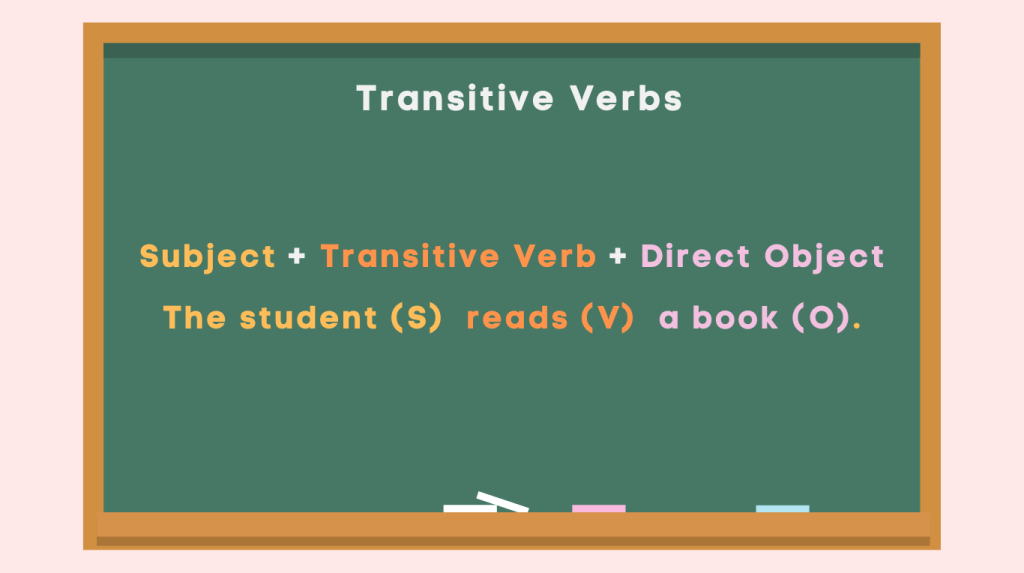Understanding Transitive Verbs
Table of Contents
Introduction
Transitive Verbs
In the realm of grammar and language, the concept of transitive verbs plays a crucial role in understanding the structure and meaning of sentences. Let’s delve into the world of transitive verbs and explore their significance in linguistic expression.
Analogy of Definition
What are Transitive Verbs?
A transitive verb is a vital component of a sentence, as it conveys an action that is directed towards a direct object. Without the direct object, the meaning of the verb remains incomplete.
Method
Identifying Transitive Verbs
To identify a transitive verb, one must recognize the action being performed by the subject and determine whether it is directed towards a direct object. This process involves understanding the relationship between the verb and the object in a sentence.
How To Use Transitive Verbs
Transitive verbs are essential components of English sentences, allowing the action to transfer from the subject to the object. Understanding how to use transitive verbs correctly can enhance your writing and communication skills. Here’s a guide to effectively using transitive verbs:
Structure of a Sentence with a Transitive Verb
A sentence with a transitive verb follows a specific structure to ensure clarity and completeness. The basic structure is:

Subject (S): The person, animal, or thing performing the action.
Transitive Verb (V): The action word that requires a direct object to complete its meaning.
Direct Object (O): The noun or pronoun receiving the action of the verb.
Here’s a detailed guide which can help you identify transitive verbs.
1. Identify the Direct Object
A transitive verb requires a direct object to complete its meaning. The direct object is the noun or pronoun that receives the action of the verb. To identify the direct object, ask “what?” or “whom?” after the verb.
Example:
“He kicked the ball.”
Verb: kicked
Direct Object: the ball (What did he kick? The ball.)
2. Ensure Completeness
A sentence with a transitive verb must include both the verb and its direct object to be complete. Without the direct object, the sentence would be incomplete or nonsensical.
Example:
Incomplete: “She made.”
Complete: “She made a cake.”
3. Maintain Subject-Verb-Object Order
In English, the typical sentence structure for using transitive verbs is Subject-Verb-Object (SVO). This order helps in making the sentence clear and understandable.
Example:
“The teacher explains the lesson.”
Subject: The teacher
Verb: explains
Direct Object: the lesson
4. Use Appropriate Verb Forms
Ensure that the transitive verb agrees with the subject in terms of tense and number. Additionally, use the correct verb form to match the context of your sentence.
Example:
Present Tense: “They play soccer every weekend.”
Past Tense: “She wrote a letter yesterday.”
Future Tense: “I will finish the project by tomorrow.”
5. Include Indirect Objects When Necessary
Some sentences with transitive verbs also include an indirect object, which indicates to whom or for whom the action is done. The indirect object usually comes before the direct object and answers the questions “to whom?” or “for whom?”
Extended Structure: Subject + Transitive Verb + Indirect Object + Direct Object
Example:
“He gave his friend a gift.”
Verb: gave
Direct Object: a gift (What did he give? A gift.)
Indirect Object: his friend (To whom did he give a gift? His friend.)
6. Avoid Common Errors
Be cautious of common mistakes when using transitive verbs, such as omitting the direct object or using an intransitive verb where a transitive verb is required. Ensure the sentence remains logical and complete.
Example:
Incorrect: “She discussed.”
Correct: “She discussed the plan.”
Examples
Example 1: She ate (what?) a sandwich.
Example 2: He wrote (what?) a letter.
Example 3: They built (what?) a house.
The examples provided illustrate the essence of transitive verbs by showcasing verbs that require a direct object to complete their meaning. In each instance, the question ‘What?’ can be asked after the verb, and the answer reveals the direct object, thereby identifying the transitive nature of the verb.
Quiz
Tips and Tricks
1. Identifying Direct Objects
Tip: To identify a transitive verb, ask the question ‘What?’ after the verb to determine the direct object.
2. Distinguishing Transitive and Intransitive Verbs
Tip: Transitive verbs require a direct object, while intransitive verbs do not.
3. Identifying the Action-Object Relationship
Tip: Determine whether the verb’s action is directed towards a direct object to identify a transitive verb.
Real life application
Story: The Adventures of Transitive and Intransitive Verbs
Exploring the world of language, transitive and intransitive verbs embark on a journey filled with linguistic puzzles and challenges that require their unique characteristics to overcome obstacles and achieve success.
Challenge 1: The Missing Object
A transitive verb encounters a sentence without a direct object, highlighting the importance of completing its action with a specific target.
Challenge 2: The Independent Action
An intransitive verb navigates through sentences independently, expressing action or state without the need for a direct object, showcasing its self-sufficiency in linguistic expression.
Challenge 3: The Dual Nature
A verb that functions as both transitive and intransitive adapts to the context of the sentence, demonstrating its versatility in conveying meaning.
FAQ's
Like? Share it with your friends
